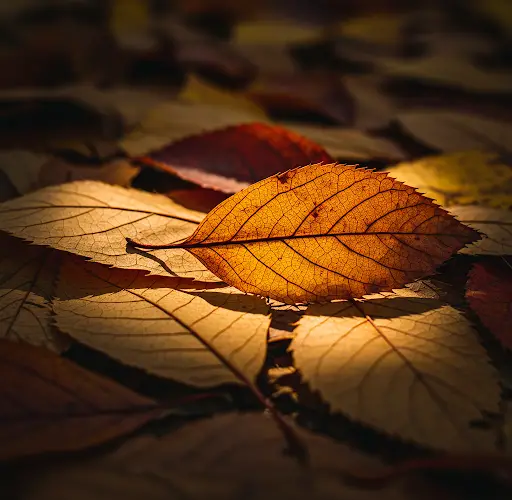Don’t Throw Away Dry Leaves—Turn Them Into Garden Gold
As autumn rolls in, most gardeners are faced with the same seasonal sight—dry leaves scattered across yards, sidewalks, and garden beds. While it may be tempting to rake them into bags and send them off to the compost facility or landfill, those fallen leaves are far from being waste. In fact, they are a valuable resource that can transform your garden into a more productive, fertile, and sustainable space.
Using dry leaves as mulch is a simple and natural technique that mimics how forests feed themselves. Nature never throws away its own waste, and with a little intention, neither should we. Read on to discover why saving and repurposing dry leaves can become one of your most rewarding autumn gardening habits.
Why Dry Leaves Are a Gardener’s Best Friend
Dry leaves are rich in carbon and other trace minerals that support healthy soil ecosystems. When they decompose, they add organic matter to the soil, improving its structure, fertility, and water-holding capacity. In short, they act as a free and powerful soil amendment.
When applied as mulch, dry leaves form a protective layer over your garden beds. This natural blanket offers multiple benefits:
-
Moisture Retention: A thick layer of dry leaves helps prevent water from evaporating too quickly. This is especially important in dry or windy climates and for gardens that rely on limited irrigation.
-
Weed Suppression: Leaves block sunlight from reaching weed seeds, reducing the number of unwanted plants competing for nutrients and space in your garden.
-
Temperature Regulation: During the winter months, leaf mulch acts as insulation. It keeps the soil warmer and protects root systems from damaging frosts.
-
Soil Improvement: As leaves break down, they feed beneficial microorganisms and earthworms. This contributes to a thriving soil food web, enhancing plant growth and long-term soil health.
-
Erosion Control: On sloped beds or during heavy rains, dry leaves help slow water runoff and prevent valuable topsoil from washing away.
How to Use Dry Leaves in the Garden
1. Shred Before Applying (Optional but Recommended)
Whole leaves can mat together when wet, creating a dense layer that blocks air and water. If possible, shred them with a mower or leaf shredder before applying. Shredded leaves break down more quickly and allow better airflow to the soil.
2. Apply Generously to Beds
Spread a layer of shredded (or whole) dry leaves 2 to 4 inches thick over your vegetable beds, flower borders, or around shrubs and trees. Be careful not to pile leaves directly against plant stems or trunks, as this can trap moisture and promote rot.
3. Mix Into Compost
Leaves are an excellent carbon-rich “brown” ingredient for compost piles. Alternate them with nitrogen-rich “greens” like kitchen scraps, grass clippings, or garden trimmings. A balanced mix helps the compost break down efficiently and creates rich, crumbly humus.
4. Use as Winter Protection
For cold-sensitive plants, dry leaves provide a layer of insulation during harsh weather. Pile leaves loosely around perennials, roses, or young trees to shield roots and lower stems from freezing temperatures.
5. Store for Later Use
If you collect more leaves than you need in fall, don’t throw them out—store them. Bag them up and set them aside to use throughout the year for mulching, composting, or as bedding for garden paths.
Leaf Mulch Tips for Success
-
Avoid diseased leaves: If your trees have experienced fungal issues like powdery mildew or leaf spot, don’t use those leaves in the garden. Burn or discard them to prevent spreading disease.
-
Combine with other materials: Leaf mulch pairs well with straw, grass clippings, or aged manure. Blending materials can create a balanced mulch that decomposes more evenly and provides a broader nutrient spectrum.
-
Be patient: While leaves offer many benefits immediately as mulch, their full contribution comes over time. As they break down, they will gradually enrich the soil—year after year.
Final Thoughts
Autumn leaves aren’t just the end of a season—they’re the beginning of better soil, healthier plants, and more sustainable gardening practices. By using dry leaves wisely, you can cut down on waste, reduce your reliance on commercial fertilizers, and create a thriving ecosystem in your backyard.
So, next time you’re faced with a yard full of dry leaves, see them for what they really are: nature’s gift to your garden.



